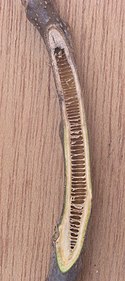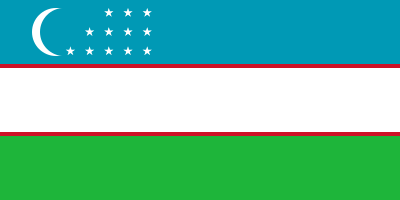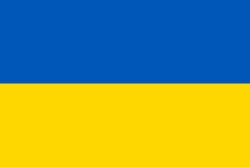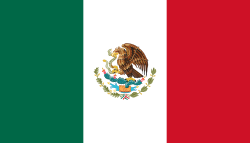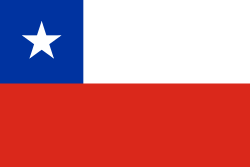Descriptive catalog - fall 1922 and spring 1923 (1922) (20852697526)
Title: Descriptive catalog : fall 1922 and spring 1923
Identifier: descriptivecatal1922chas (find matches)
Year: 1922 (1920s)
Authors: Chase Nursery Company; Henry G. Gilbert Nursery and Seed Trade Catalog Collection
Subjects: Nurseries (Horticulture) Catalogs; Shrubs Catalogs; Trees Catalogs; Fruit Catalogs; Gardening Equipment and supplies Catalogs; Nurseries (Horticulture); Shrubs; Trees; Fruit; Gardening
Publisher: Chase, Ala. : The Nursery
Contributing Library: U.S. Department of Agriculture, National Agricultural Library
Digitizing Sponsor: U.S. Department of Agriculture, National Agricultural Library
View Book Page: Book Viewer
About This Book: Catalog Entry
View All Images: All Images From Book
Click here to view book online to see this illustration in context in a browseable online version of this book.
Text Appearing Before Image:
lllllhlMIIUIIIIIHIIII iiiiiiniiiiimiiiiiiiiiii 11 < 11111L t IJ1111L1111111 II.I CHASE'S "ALABAMA GROWN" NURSERY STOCK (IIIIII1UIIII IIIIMIMIIIIIIIIIIIIIIIIIIIIII PECANS—Continued. of nuts per acre is doubled and the owner gets the benefit during his lifetime; that the trees so planted will not be over-crowded for, say, twenty-five years. "Let posterity do the thin- ning," says Mr. Scott. They thrive best on deep, rich soil. Lands along the creeks and river valleys which are subject to occasional overflow and which are underlaid with a permanent water supply are most ideal for Pecan growing. It is always best to plant the trees where their tap roots will reach the water, but this is not absolutely necessary for their productiveness. All that is expected of a Pecan tree until it reaches bearing age is wood growth. It wTould follow that anything which is favorable to such growth should be available. Xo young Pecan tree should be starved for either moisture or plant food; therefore, they should have fre- quent and shallow cultivation, for such culti- vation conserves the moisture and makes the plant food available for the trees. When the trees become well established, say 8 or 10 years old, and it is found that they bear better without cultivation—cultivation should cease. No trees should be cultivated unless good re- sults from it. YIELD IN NITS AND DOLLARS. Mr. Scott has kept a careful record on an orchard of 30 trees, showing the average yield per tree as follows: Eighth year after planting, 20 lbs. Ninth year after planting, Z1V2 lbs. The varieties are Stuart, Schley, and Success. If planted 40 by 40 feet it requires 27 trees per acre. An average yield of 20 lbs. per tree at 60c per pound means $12.00 per tree, or $325 per acre the eighth year. He stated that the entire crop sold readily at 60c to 70c per pound f. o. b. shipping point. The largest and most profitable pecan tree that we have heard of is in Louisiana. It measures 5 feet in diameter. The branches spread 175 feet. It produced in 1919 nine barrels of nuts which sold for $450. Can any- one match this record? IIIIIIIIIIIIIIUIIIIIIIIIIIIIIIIIMIIIhl IIUlllllllillLIU Columbus, Miss., Mar. 30, 1922.—"I ordered several thousand trees from you last fall. They made a very fine appearance indeed, and all are now living." Birmingham, Ala., Mar. 14, 1922.—"In acknowl- edging the arrival of your wonderful selection of plants, I wish to express my deepest appreciation. May success be your password and your generosity Chase away unsuescess." Birmingham, Ala., Oct. 22, 1921.—"My May- flower Peach purchased from you and planted in March 1920, bore 26 peaches in 1921. My straw- berries have been wonderful." Japan Walnuts
Text Appearing After Image:
Chestnuts. Chestnuts A hardy ornamental tree with pleasing fo- liage. They grow best in well-drained soils with sunny exposures. PRICES—$1.00 each; $8.50 per 10. Spanish. A rapid-growing tree of good size. The nuts are produced early, five-year-old trees on our grounds bearing good crops. The nuts are not so sweet as the native or American Chestnut, but find a ready market owing to their good size and fine appearance. Valuable as a timber tree. Walnuts All of the species are valuable objects for lawn or landscape, and in addition for their toothsome nuts. The fruits of the Japanese Walnuts are considered superior to those of the native species, and in localities where the English Walnut is not hardy, are commended to the attention of orchardists. They thrive best in moist, fertile soils. PRICES—$1.00 each; $8.50 per 10. Black. A desirable shade tree and one of the most valuable for timber. Uncle Sam had the Boy Scouts looking up Black Walnut trees for gunstock material, you remember. Should be used for reforesting waste lands. English. Makes a very handsome shade or lawn tree and produces, though not with regularity in this section, a table nut of fine quality. Here in North Alabama the crop is uncertain, but we think so much of the tree as an ornamental that we do not hesitate to recommend it for this purpose alone. Japan. A vigorous tree, entirely hardy and a sure and prolific bearer. The Japan Walnuts are not as thin-shelled as the English, nor as good quality but much like it in appear- ance. They make a beautiful ornamental tree with a broad, spreading top. At home almost anywhere, except on poorly drained soils. Eleven
Note About Images
Relevantní obrázky
Relevantní články
OřešákOřešák (Juglans) je rod rostlin z čeledi ořešákovité. Jsou to povětšině opadavé stromy s aromatickými, střídavými, lichozpeřenými listy. Květy jsou drobné, uspořádané v jednopohlavných jehnědovitých květenstvích a opylované větrem. Plodem je pseudopeckovice neboli oříšek v dužnatém obalu. Rod zahrnuje asi 21 druhů. Je rozšířen v mírném a subtropickém pásu severní polokoule a v horských oblastech Latinské Ameriky. Z opadaných listů a plodů a také z kořenů ořešáků se uvolňuje hnědě zbarvená látka zvaná juglon, která potlačuje rozvoj vegetace v okolí stromu. .. pokračovat ve čtení








